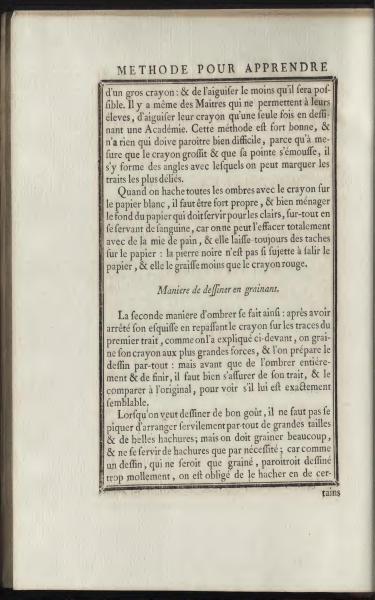Method for Learning
When using a thick pencil, sharpen it as little as possible. Some Masters even only allow their students to sharpen their pencil once when drawing an Academy. This method is very good and not difficult to execute because as the pencil thickens and its tip wears down, it forms angles that can be used to mark the finest details.
When shading all the shadows with the pencil on white paper, you must keep everything clean and preserve the background of the paper for the highlights, especially when using red chalk, since it cannot be completely erased with bread crumbs and always leaves marks on the paper: black stone does not soil the paper as much and makes it less greasy than the red pencil does.
Method of Drawing with Texturing.
The second method of shading is done as follows: after finalizing your sketch by tracing over the initial line, as explained earlier, press the pencil with greater force, preparing the drawing throughout. But before fully shading and finishing, you must ensure the accuracy of your outline and compare it with the original to see if it is exactly similar.
When aiming to draw with a good taste, do not pride yourself on arranging large cuts and fine lines everywhere; however, you must add a lot of texture and only use cross-hatching when necessary; because a drawing that is only textured would appear too soft, you must hack certain parts to make it firmer.
Translation Notes:
"Académie" may refer to life drawing or academic studies in art. "Graine" or "graining" refers to adding texture or stippling to the drawing for effect.
The text explains a drawing technique that emphasizes minimal sharpening of pencils for effective sketch lines and details. It discusses methods for shading using thick and textured lines by comparing the work with an original to ensure accuracy. Additionally, it stresses using textures judiciously and introduces techniques like cross-hatching to avoid overly soft appearance in drawings.
